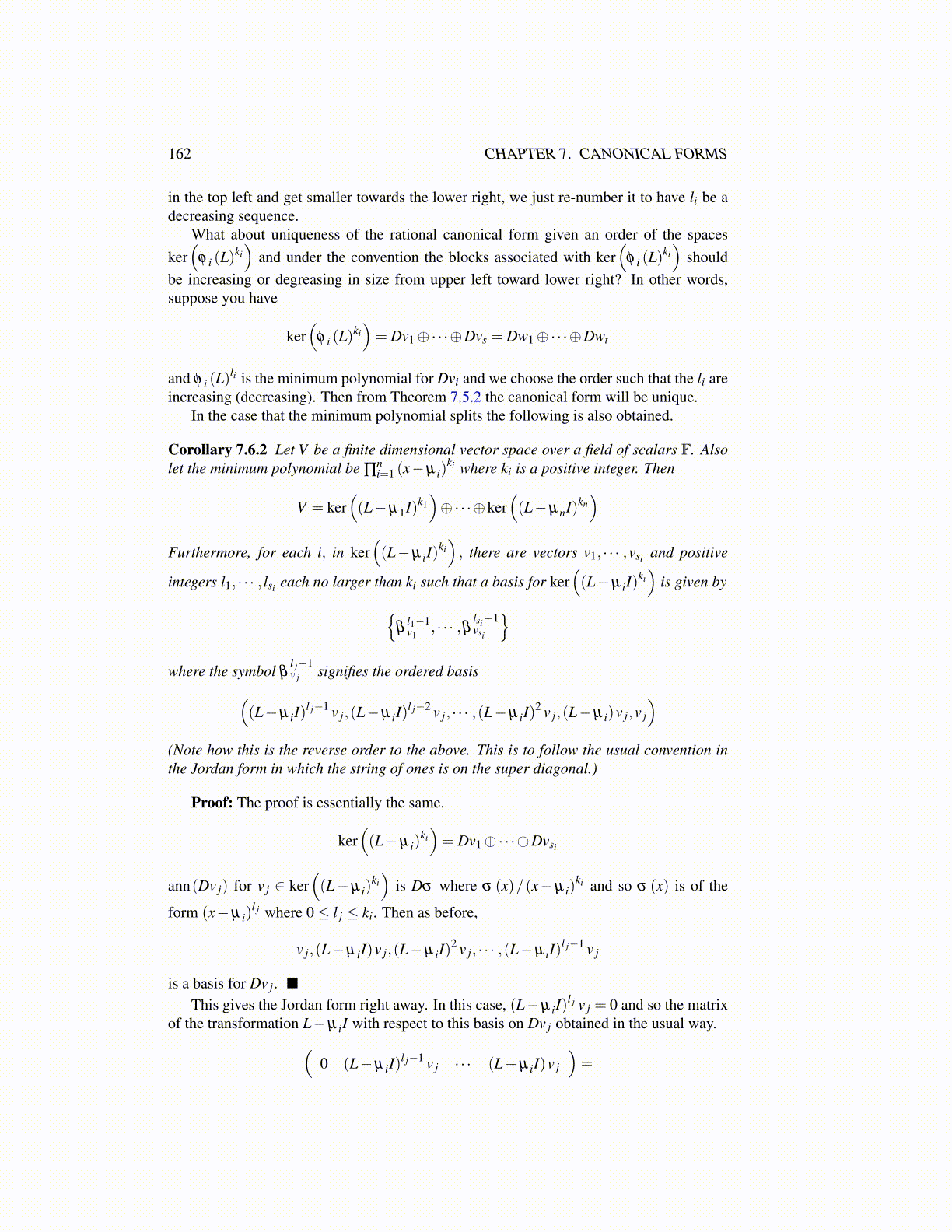
162 CHAPTER 7. CANONICAL FORMS
in the top left and get smaller towards the lower right, we just re-number it to have li be adecreasing sequence.
What about uniqueness of the rational canonical form given an order of the spacesker(
φ i (L)ki)
and under the convention the blocks associated with ker(
φ i (L)ki)
shouldbe increasing or degreasing in size from upper left toward lower right? In other words,suppose you have
ker(
φ i (L)ki)= Dv1⊕·· ·⊕Dvs = Dw1⊕·· ·⊕Dwt
and φ i (L)li is the minimum polynomial for Dvi and we choose the order such that the li are
increasing (decreasing). Then from Theorem 7.5.2 the canonical form will be unique.In the case that the minimum polynomial splits the following is also obtained.
Corollary 7.6.2 Let V be a finite dimensional vector space over a field of scalars F. Alsolet the minimum polynomial be ∏
ni=1 (x−µ i)
ki where ki is a positive integer. Then
V = ker((L−µ1I)k1
)⊕·· ·⊕ker
((L−µnI)kn
)Furthermore, for each i, in ker
((L−µ iI)
ki), there are vectors v1, · · · ,vsi and positive
integers l1, · · · , lsi each no larger than ki such that a basis for ker((L−µ iI)
ki)
is given by{β
l1−1v1
, · · · ,β lsi−1vsi
}where the symbol β
l j−1v j signifies the ordered basis(
(L−µ iI)l j−1 v j,(L−µ iI)
l j−2 v j, · · · ,(L−µ iI)2 v j,(L−µ i)v j,v j
)(Note how this is the reverse order to the above. This is to follow the usual convention inthe Jordan form in which the string of ones is on the super diagonal.)
Proof: The proof is essentially the same.
ker((L−µ i)
ki)= Dv1⊕·· ·⊕Dvsi
ann(Dv j) for v j ∈ ker((L−µ i)
ki)
is Dσ where σ (x)/(x−µ i)ki and so σ (x) is of the
form (x−µ i)l j where 0≤ l j ≤ ki. Then as before,
v j,(L−µ iI)v j,(L−µ iI)2 v j, · · · ,(L−µ iI)
l j−1 v j
is a basis for Dv j. ■
This gives the Jordan form right away. In this case, (L−µ iI)l j v j = 0 and so the matrix
of the transformation L−µ iI with respect to this basis on Dv j obtained in the usual way.(0 (L−µ iI)
l j−1 v j · · · (L−µ iI)v j
)=